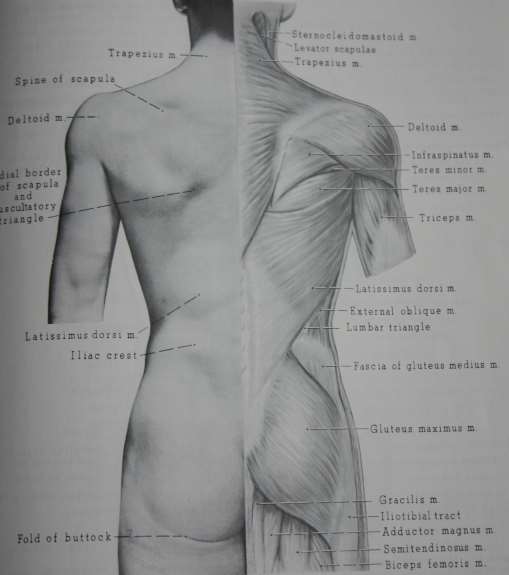Buttock Augmentation – What are the options?
Different cosmetic buttock enhancement procedures
Fat Transfer Technique for Buttock Augmentation
A buttock augmentation can be obtained using different techniques depending on the patient’s wishes. Autologous fat injections are when surgeons take fat from one part of the person’s own body to add volume to the buttocks. Donor sites may include the abdomen, hips, back and thighs.
Fat cells are removed using liposuction and then injected into the buttocks layers. A disadvantage of this technique is for the fact that it is difficult to predict how much fat the body reabsorbs, because of this; multiple sessions are sometimes necessary procedure.
How the surgery is usually performed
Usually, this surgery is performed under general anesthesia. And its duration will depend on the individual patient.
A method of increasing average buttocks needs about 250 – 350 cc of fat for each side. Indeed, this is a good amount of fat and, therefore, this surgery is not recommended for very thin people.
When the fat has been removed, purified and carefully processed, consequently, only a small percentage of the initial amount qualifies to be transplanted.
After having processed the acquired fat cells, the injection phase can be carried out. The doctor will inject small amounts of fat in various parts of their buttocks at different depths. This way the patient can achieve higher absorption rate of the acquired fat cells.
The whole procedure, therefore, requires many micros – fat injections which are essential to give the patient a natural, smooth and uniform appearance to your buttocks.




How long does the procedure usually take?
Because buttock augmentation procedure is quite careful, it can take between 2 to 3 hours carried out successfully. Put syringe with grease.
Surgical Technique Using Implants:
A butt implant is an alternative way to reshape the buttocks. This procedure is performed by making an incision in the crease between the buttocks and inserting a silicone implant in the pockets created intramuscularly (under the muscles). This positioning has been proven to be the safest for the implant.

This surgery is performed under general anesthesia and usually takes about 1-2 hours to complete. The area where the implant will be placed is determined in advance and marked just before going into surgery.
Through the incision, the gluteus maximus is raised to create an opening large enough for the implant. When the implant is placed, the doctor will continue his work on his other buttock, examining the two and ensuring that the results are symmetrical.
When desired results have been achieved, the incisions are sutured with a few stitches. The surgeon will then place a compression garment or girdle specially made for the buttocks compression. This is to reduce the level of inflammation and discomfort for the patient. You must use micropore ® to reduce friction around the friction points while protecting the wound.
What are the main risks and potential complications of buttock augmentation?
Like any major surgery, buttock augmentation has risks and potential complications. Therefore, you should consider it as seriously as you would any major surgery. Also, note that increasing implant has a much higher rate of complications when compared with fat injection.
What are the most common minor complications or consequences?
- Changes in skin sensitivity: this is a normal consequence that occurs worldwide in varying degrees. You may experience “parenthesis” which is an altered sensation at the site of the surgery. This can be either in the form of an increased sensitivity (pain) in the area, or the loss of any feeling (numbness) in the area. This sensation is permanent in very rare cases. However, in almost all patients will experience this change in sensation within the first two to four months after surgery. Massaging the area of liposuction helps to increase circulation and facilitates the recovery of normal skin sensitivity.
- Swelling is a normal event that occurs in every patient. Compression garments and post -operative massage help to minimize this risk and to reduce its duration to less than two months.
- There will be bruising in many areas that were aspirated or grafted, as well as in adjacent or dependent areas. For example you will also consider the bruises and swelling on the back of the thighs and genitals. Bruising usually move downward due to gravity. Some bruising can last a long time or even lead to permanent skin pigmentation. Sunbathing immediately after surgery can cause these injuries to become permanent stains on the skin.
Heard enough of the buttock surgery complications? Would you like to learn more about a natural way to buttock enhancement? CLICK HERE
- Skin irregularities and holes: the injection areas can develop contour irregularities, including elevations and dimples in terms of its elasticity of the skin and the fat grade injection. Usually, postoperative massage helps soften these areas.
- Asymmetry: No two halves of the body are identical. Therefore, after buttock augmentation, it may seem that there are very slight differences between the contour and size of the two parties. Disorders Scoliosis or other spine types can magnify body asymmetry.
- Muscle spasm is very common to get temporary muscle spasm or cramping in the muscles of the buttocks. This usually resolves quickly by itself or can be helped by massage or local heat.
- The pain and discomfort: you should expect to have pain or feel like having worked out too hard. Some of this may feel like a stabbing pain in the augmented areas and adjacent areas. Usually, it can be administered pain medication, and it usually lasts for a few weeks.
- Seroma or fluid collection: After fat injection or implant placement is done, there might be the straw colored liquid from the blood in the areas of the buttock. Your surgeon can alleviate these by draining a small needle in an office procedure.
- Fat absorption and fibrosis: approximately 30 % of the injected fat is absorbed and does not survive. If this happens unevenly, there may be areas that become dimples or dents, due to excessive fat desorption. Furthermore, in the areas of healing fat absorption occur which makes the fabric feel hard.




Why Not Try A More Natural Approach to Butt Enhancement?
The rare and serious complications:
Infection: Infection can occur after any surgery and may rarely occur after liposuction. The rate of infection increases with increasing amounts of injected fat. This is because it increases the risk of seroma formation. But the overall rate can be low due to the routine use of postoperative antibiotics.
Furthermore, it has been reported that there is a significant increase in the risk of infection with buttocks implant. The increase can be as high as 25-30%. This is likely due to the proximity of the incision to the rectum.
Because of this, generally, patients should be fully aware of this serious risk and very attentive post -operative care is discouraged. If the patient develops a mild infection it should be treated with antibiotics immediately. Otherwise, the implant has to be removed, and the wound has to be re-opened which can lead to slow closing (which can take several weeks.) In extremely rare cases, infection can be serious or life threatening.
Stroke: this is extremely rare and is reduced with early postoperative ambulation. Fat embolism may occur when fat is loosened and enters the blood through blood vessels ruptured (broken) during liposuction. Micro fat fragments trapped in the blood vessels, gather in the lungs, or travel to the brain.
Other risks or adverse effects include:
- Visceral Perforations (puncture wounds in the organs
- Skin necrosis (skin death)
- Implant protrusion
- Nerve Injury: Buttock implants can migrate or press on the sciatic nerve, which travels in the buttock region. This could cause a crash or injury to the nerve. Treatment may include removal of the implants.
- Fluid imbalance
- Anesthetic toxicity
- Deaths related to liposuction: there is numerous reports related deaths liposuction procedure. Studies to date are inconclusive, so it is difficult to be sure how often death occurs with liposuction.
References:
http://www.nlm.nih.gov/medlineplus/plasticandcosmeticsurgery.html
http://plasticsurgery.com/


